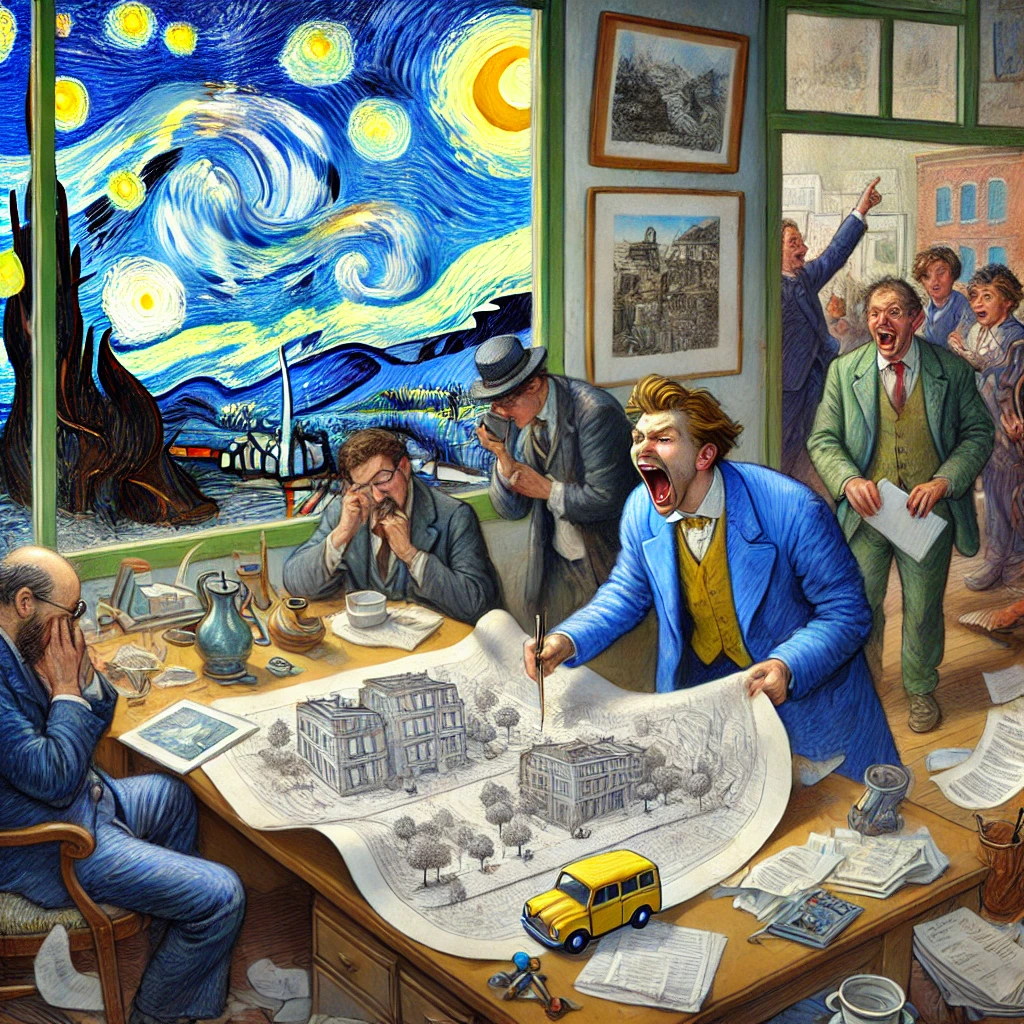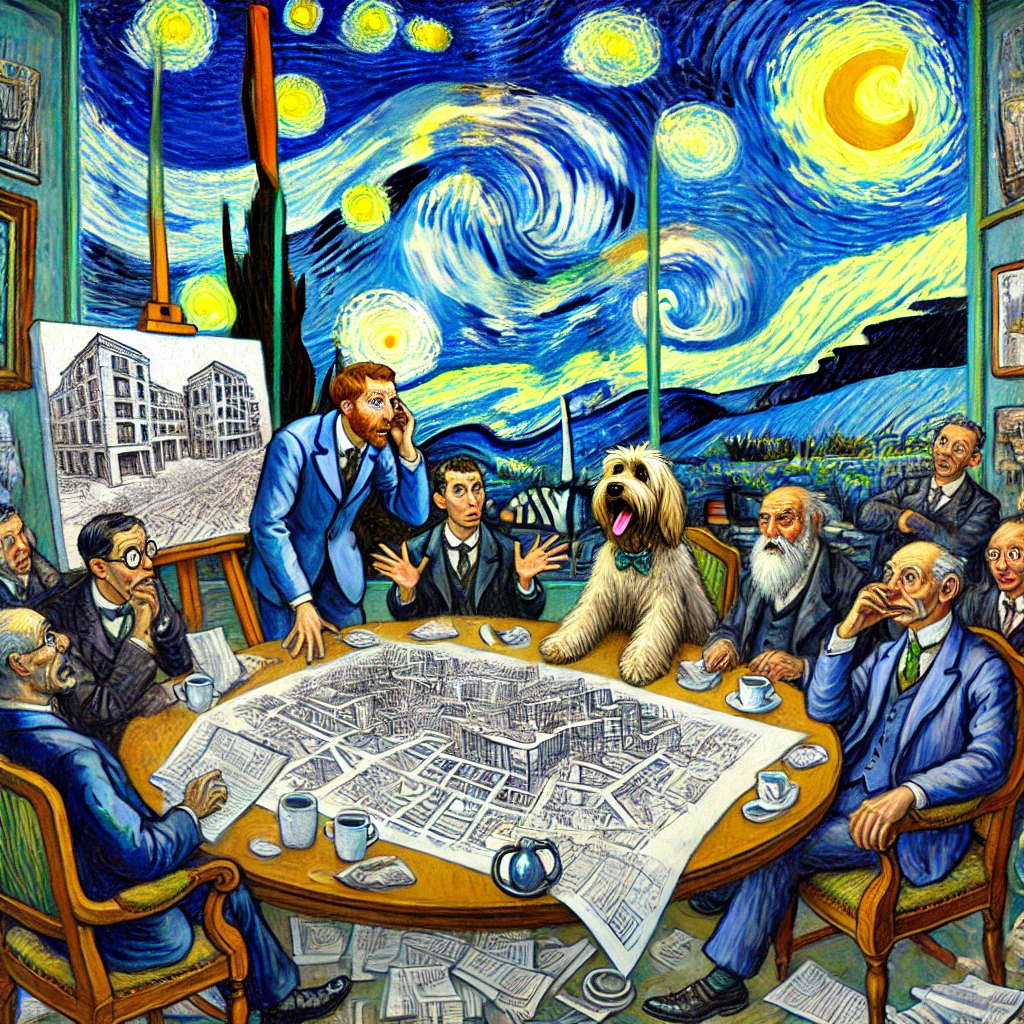Let me tell you a story. It’s about a future that isn’t here yet, but one we can almost touch, almost see, almost live in. A future where the walls between developers, communities, and planners crumble. A future where the cities we build aren’t just concrete and steel—they are living, breathing stories. Stories shaped by the people who inhabit them, stories that echo through the halls of every building, every street corner, every park.
I remember the day it all clicked for me. We were working on a colossal project—a new congress center in downtown Halifax, Nova Scotia. It was massive, a half-billion-dollar project with enough complexity to give even the most seasoned developer sleepless nights. But there was this one part—a vast passageway between two main blocks. It was a blank canvas, a gallery in waiting, and the developer had a vision. Fifty enormous screens lining the walls, creating an immersive experience unlike any other. But he wasn’t sure—about the dimensions, the distances, the lighting, everything. Millions of dollars were on the line.
So, we did what we do best. We didn’t just create a rendering. We built a window into the future. We took the actual street view and, with our technology, projected this future reality seamlessly onto it. The day I walked into his office and showed him what we had built, his reaction said it all. He looked at me, eyes wide, and said, “Mario, for the first time, I can see it. I’ve been working on this project for a decade, but today, I finally see it. You’ve built me a time machine.”
That’s when I knew. This wasn’t just about making pretty pictures. This was about giving people the power to see their future, to interact with it, to shape it. That’s the vision behind Time Machine.
We’re not just here to help developers market their properties. We’re here to bridge the gap between what is and what could be. To give communities a voice in the shaping of their world and to help planners see the bigger picture, to understand the pulse of the people they serve.
Imagine walking through your neighborhood, but instead of just seeing the buildings as they are, you see them as they will be. Imagine being able to explore every angle, every detail, and understand not just the developer’s vision but how it fits into the tapestry of your life, your memories, your future. That’s what we’re building.
But here’s the thing—we’re not just slapping on a layer of AI and calling it a day. No, we’re integrating this with the tools people already know, tools they trust. Google Street View is familiar to everyone, and that’s why we’ve fused it with our 3D process to create something so seamless, so intuitive, that it feels like second nature. You see the present, and with a click, you step into the future.
And we’re not stopping there. We know that real change doesn’t come from just showing people what’s possible. It comes from listening to them, understanding their needs, their fears, their hopes. That’s why our platform isn’t just a one-way street. We’re using AI not just to gather feedback, but to make sense of it, to distill it into actionable insights that planners and developers can actually use. This isn’t just about transparency—it’s about collaboration, about bringing everyone onto the same page.
But let’s not sugarcoat it—progress isn’t easy. Change is inevitable, and with it comes resistance. But we believe that with the right tools, with the right vision, we can guide that change in a way that honors the past while embracing the future.
In Italy, where I’m from, every street corner has a story. Our cities are old, filled with memories, much like an old, well-worn sofa that molds perfectly to your body after years of use. You don’t just throw it out for something new because it’s not just furniture—it’s comfort, it’s familiarity, it’s home.
But here in North America, cities are growing, evolving rapidly. They’re in a state of constant renewal, like a living room that’s constantly redecorated with the latest trends. And while new can be exciting, if we replace the old without thought, cities can become like those stiff, impersonal chairs in a waiting room—functional, but devoid of warmth, of history, of soul.
If we’re not careful, we risk turning our cities into spaces people simply use out of necessity, not places where they feel at home, where they truly belong. Every new building, every new development, should add to the narrative of the city, not erase it, ensuring that cities remain places people want to stay in, not just pass through.
That’s the power of what we’re building with Time Machine. It’s not just about seeing the future—it’s about shaping it, together. We’re giving people the tools to make their voices heard, to ensure that the cities of tomorrow reflect the needs and desires of those who live in them today.
We’re at the cusp of something truly revolutionary. Just as streaming changed the way we consume media, our technology will change the way we build our cities. It’s not a question of if—it’s a question of when. And when that time comes, those who have embraced this new way of thinking, who have used these tools to engage with their communities, will be the ones leading the charge.
This is my vision. A future where cities are not just built—they are crafted, with care, with input from everyone who will live in them. A future where progress doesn’t come at the expense of community, but because of it.
And it all starts here, with Time Machine. Let’s build the future together.





